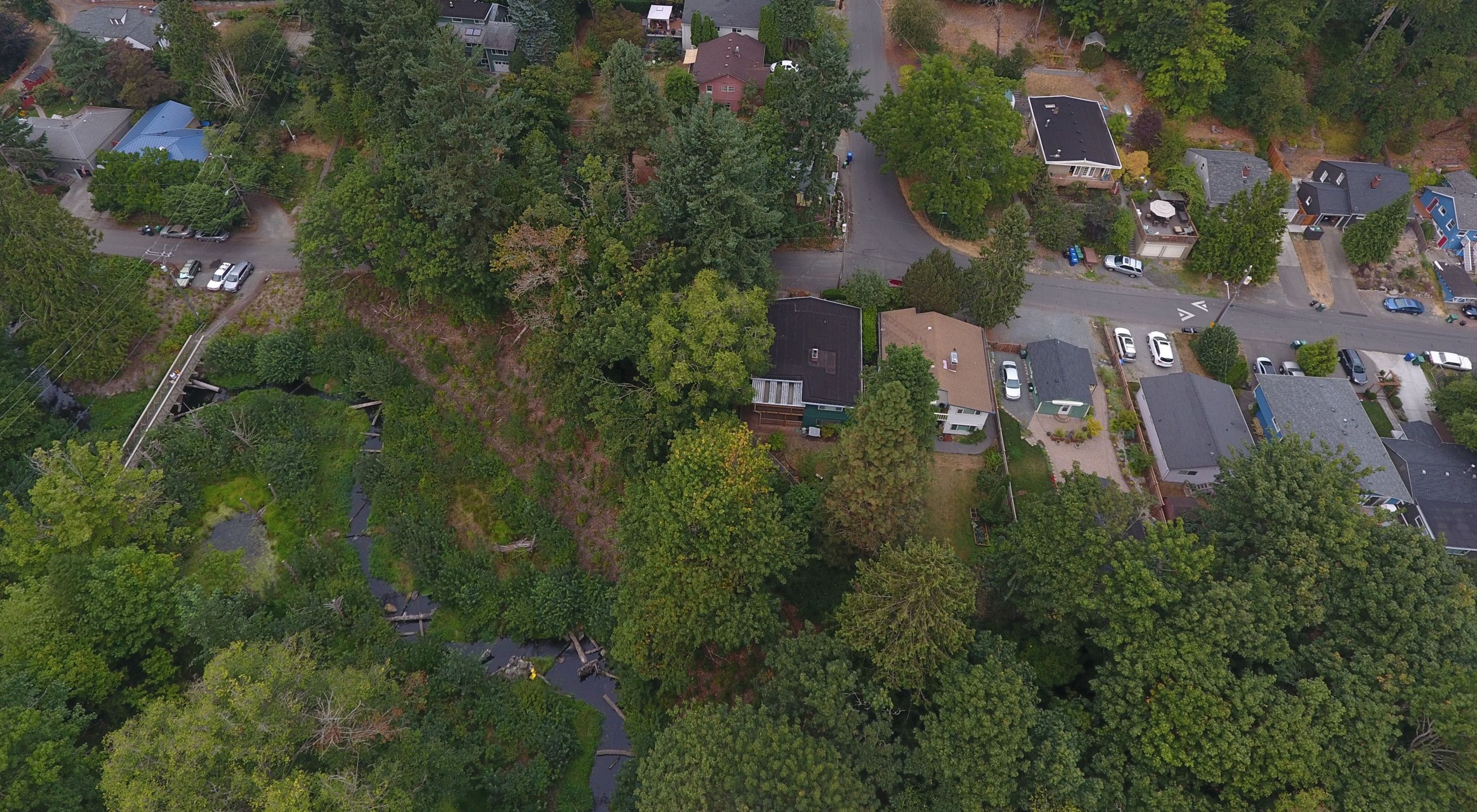If Thornton Creek could tell a story, it would not only be surprising— it would be surprisingly good.
This once-polluted and neglected Seattle stream is once again home to spawning salmon, thanks to extensive and holistic restoration. It continues to be a living laboratory for how we can restore Puget Sound to health.
"Engineering with Nature - An Ode to Water, Wood, and Stone" documents this revival.
Initiated by Seattle Public Utilities as a neighborhood flood control project, the effort entailed rebuilding 1,600 feet of the creek’s channel. Workers realigned the channel, tore out the fill from development and repositioned the creek back into its natural flood plain.
The project transformed a 6 ft wide rockery-lined channel into a meandering channel 15 to 20 ft wide with a 30 to 100 ft wide floodplain. Approximately 150 pieces of large wood and stream gravel were added to create natural and complex in-stream habitat.
Following the radical redevelopment project that revitalized the creek and cleaned up the water by removing pollutants through stream bed filtration, adjacent neighborhoods no longer flood, water quality has improved, and, most surprisingly, Chinook salmon have returned to the creek to spawn. Researchers say the project could be an example for how to design cities with healthy ecosystems despite human-caused pollution.

Two points of connection
Our aquatic ecologist Emily Howe is working on a collaboration with the team featured in the film through our support of a Conservancy NatureNet Fellow- Skuyler Herzog. By funding Skuyler’s post-doctoral research, we will help demonstrate that each engineered log jam reduces stormwater pollution in the water.
This research will enable projects like this to qualify for state funding designated for stormwater pollution—so we can enable more and bigger restoration projects like this that clean up the stream, reduce flooding, and provide habitat and clean water for salmon.
And this project received funding from the Floodplains by Design program, a public-private partnership led by the Conservancy, the state department of Ecology, and the Puget Sound Partnership. Floodplains by Design was created specifically for these kinds of projects that bring multiple benefits for communities and for nature.
Why is this important?
Emily Howe says: “This type of restoration is much more inclusive than a stormwater retention facility. It revitalizes the creek itself by adding back habitat complexity, flood storage, contaminant removal, and all the components of a functional food web, from microbes in the hyporheic zone to Chinook salmon.
